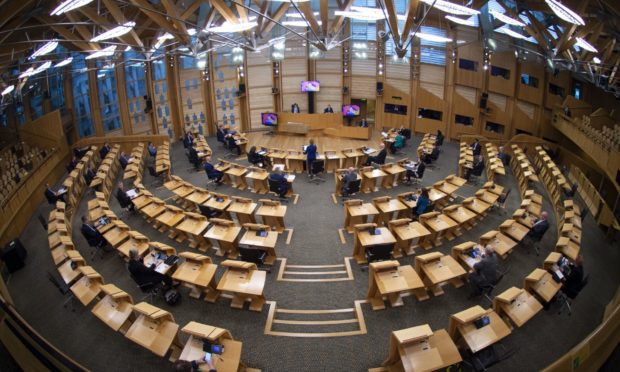Anyone can start a petition to make changes through the Scottish Parliament. All you need is an idea.
In the past 22 years of devolution, those ideas have ranged from probing the globally significant Lockerbie bombing case to simple road maintenance in small communities.
MSPs have listened to people on a bewildering number of topics, but many with everyday value such as animal welfare, changing the school curriculum and improving healthcare.
There are no age limits. The youngest to ever start a petition was seven-year-old Callum Isted who wants all school pupils to be given a reusable water bottle.
And unlike petitions submitted to the UK Parliament, they will be still be considered by MSPs even if it collects no signatures in support of it.
How to start a petition
You first need to contact at least one of your local MSPs or the Scottish Government.
Then the petition can be formally submitted on the Scottish Parliament website.
Once parliament checks the petition over to make sure it meets all the rules, it appears online and signatures can be collected from people to show support.
Afterwards the public petitions and citizen participation committee will debate the topic and may even ask the person who started it to come into Holyrood to answer questions from MSPs.
And if MSPs agree there is a need to address the issue raised in the petition, it can be debated by MSPs in the chamber.
What subjects can people put in petitions?
Animal welfare has proved popular with numerous petitions involving dogs and other pets over the years.
This includes calls to regulate dog walkers, take action on irresponsible dog breeding, ban greyhound racing, and change the legal status of dogs.
There is no timeframe for how long a petition will take – the committee may look at it just once, or several times, or send it onto another committee.
One of the longest-running petitions is a call for the government to open an independent inquiry into the conviction of Abdelbaset al-Megrahi for the Lockerbie bombing in 1988.
That petition was originally submitted by Dr Jim Swire on behalf of the Justice for Megrahi group on November 1, 2010, meaning that petition has been running for 12 years.
Other petitions are thrown out almost immediately by MSPs.
Some of these short-lived petitions include banning LGBT+ education in schools, stopping the rollout of 5G and abolishing laws against blasphemy and heresy.
One of the strangest petitions to ever be considered by Holyrood is a call to legalise adult incest.
This one is even weirder because it came from a person who appears to live in Australia, and despite three attempts has never received any support from MSPs or members of the public.
But legally the parliament still has to consider requests from outside Scotland.
Local activists who made a difference
You can take a look at our series here, featuring some local faces who have brought around real change through their petitions.
You can also read more from Presiding Officer Alison Johnstone, who oversees the business of parliament in the debating chamber.
She explains how parliament needs to hear from more people – and how MSPs are trying to make it easier to do.


